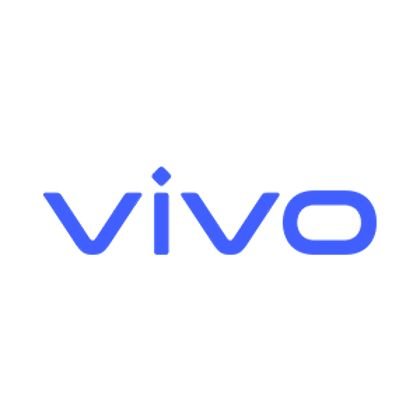
Google has been at the forefront of quantum computing research and development, with its team at Google Quantum AI working towards achieving “quantum supremacy.” Quantum supremacy refers to the point at which a quantum computer can perform a computation that is practically impossible for classical computers to achieve within a reasonable timeframe. In 2019, Google claimed to have reached this milestone when their quantum computer, Sycamore, performed a specific task much faster than the world’s most powerful supercomputers. Google’s quantum supremacy efforts are powered by a combination of cutting-edge hardware, innovative algorithms, advanced quantum programming frameworks, and substantial investments in research and development. This article delves into the key technologies that are driving Google’s quantum supremacy ambitions.
1. Sycamore Processor
Overview:
At the heart of Google’s quantum computing efforts is the Sycamore processor, a quantum chip that integrates 54 superconducting qubits. Sycamore is designed to operate at extremely low temperatures and perform quantum operations with high fidelity, enabling it to solve certain computational problems faster than classical supercomputers.
Key Features:
- Superconducting Qubits: Utilizes superconducting qubits, which are tiny loops of superconducting material that can exist in multiple quantum states simultaneously, enabling quantum parallelism.
- High Fidelity Quantum Gates: Sycamore features high-fidelity quantum gates with low error rates, which is crucial for maintaining quantum coherence and executing complex algorithms.
- Quantum Error Correction: Implements quantum error correction techniques to protect qubits from errors caused by decoherence and other quantum noise, which is essential for reliable quantum computation.
- Scalable Architecture: Designed to be scalable, allowing Google to increase the number of qubits and enhance the processor’s capabilities over time.
Impact:
Sycamore achieved quantum supremacy by completing a specific task — generating random numbers through a quantum circuit — in 200 seconds, which would take the fastest classical supercomputer thousands of years to solve. This processor represents a significant leap forward in quantum computing hardware.
2. Quantum Circuit Simulation
Overview:
Quantum circuit simulation is an essential technology that supports Google’s quantum supremacy efforts by enabling researchers to model and optimize quantum circuits on classical computers. This helps identify optimal configurations for running quantum algorithms and reduces the likelihood of errors during quantum operations.
Key Features:
- Tensor Network Simulation: Uses tensor networks, a mathematical framework that efficiently represents and simulates quantum circuits, allowing for the evaluation of quantum algorithms’ performance.
- High-Performance Computing Integration: Leverages high-performance classical computing resources, such as clusters and supercomputers, to simulate complex quantum circuits.
- Algorithm Development and Optimization: Aids in developing and testing new quantum algorithms before they are implemented on actual quantum hardware, accelerating research progress.
Impact:
Quantum circuit simulation enables Google’s researchers to better understand how quantum algorithms behave, optimize them for quantum hardware, and identify potential sources of errors. This accelerates the development of quantum algorithms capable of demonstrating quantum supremacy.
3. Quantum Error Correction and Mitigation
Overview:
Quantum error correction (QEC) and mitigation techniques are crucial for achieving reliable quantum computation. Since quantum bits (qubits) are highly susceptible to errors due to environmental noise, decoherence, and imperfect quantum gates, error correction techniques are necessary to ensure accurate quantum computations.
Key Features:
- Surface Code Error Correction: Google utilizes surface codes, a type of quantum error-correcting code that provides a robust framework for detecting and correcting errors in quantum circuits.
- Quantum Error Mitigation Techniques: In addition to QEC, Google employs error mitigation strategies, such as zero-noise extrapolation and probabilistic error cancellation, to reduce the impact of errors during quantum computations.
- Logical Qubits: Constructs logical qubits, which are collections of physical qubits used to encode and protect quantum information, thereby increasing the reliability of quantum operations.
Impact:
Error correction and mitigation technologies are vital for scaling up quantum processors and achieving practical quantum computing. They enable Google to maintain high fidelity in quantum operations, which is essential for demonstrating quantum supremacy and advancing toward fault-tolerant quantum computers.
4. Quantum Machine Learning (QML) and Quantum Algorithms
Overview:
Google is actively developing quantum algorithms and quantum machine learning (QML) techniques to leverage quantum computing for solving real-world problems more efficiently than classical algorithms.
Key Features:
- Variational Quantum Algorithms: Uses variational quantum algorithms (VQAs), which combine quantum circuits with classical optimization methods, to solve complex optimization and machine learning problems.
- Quantum Neural Networks: Researches quantum neural networks (QNNs) that mimic classical neural networks but operate in a quantum environment, potentially offering exponential speedups for certain tasks.
- Quantum Chemistry Simulations: Develops quantum algorithms to simulate molecular structures and chemical reactions, which could revolutionize material science, drug discovery, and chemical engineering.
Impact:
Google’s quantum algorithms and QML efforts aim to demonstrate the practical advantages of quantum computing in various domains, including cryptography, optimization, artificial intelligence, and scientific research. These efforts are key to unlocking the full potential of quantum supremacy.
5. Quantum Computing Software Stack (Cirq and OpenFermion)
Overview:
Google has developed a comprehensive quantum computing software stack, including the open-source frameworks Cirq and OpenFermion, to support quantum algorithm development, quantum circuit simulation, and quantum hardware control.
Key Features:
- Cirq Framework: A Python-based quantum programming framework that provides tools to design, simulate, and execute quantum circuits on Google’s quantum processors. It is tailored for developing quantum algorithms that can run on near-term quantum computers.
- OpenFermion Library: A specialized library for quantum chemistry and quantum simulation, enabling researchers to model complex chemical systems and perform quantum simulations more efficiently.
- Integration with Quantum Hardware: The software stack is fully integrated with Google’s quantum hardware, allowing seamless deployment of quantum circuits and algorithms on the Sycamore processor.
Impact:
Cirq and OpenFermion empower researchers and developers to experiment with quantum algorithms and simulations on both classical and quantum hardware. These tools accelerate the development of new quantum applications and enhance collaboration across the quantum computing community.
6. Cryogenic Systems and Quantum Control Electronics
Overview:
Quantum computers, like Sycamore, require ultra-low temperatures to operate. Google uses advanced cryogenic systems and quantum control electronics to maintain the delicate quantum states necessary for computation.
Key Features:
- Dilution Refrigerators: Utilizes dilution refrigerators that cool the quantum processor to temperatures near absolute zero (~10 millikelvin), reducing thermal noise and preserving quantum coherence.
- Quantum Control Hardware: Develops custom quantum control electronics, such as digital-to-analog converters (DACs) and arbitrary waveform generators (AWGs), to precisely control the quantum gates and qubits.
- Quantum State Readout: Implements advanced readout techniques, such as dispersive readout and single-shot measurement, to accurately measure quantum states and detect errors.
Impact:
Cryogenic systems and quantum control electronics are essential for maintaining the stability and coherence of qubits during quantum computations. These technologies enable Google to operate its quantum processors with high precision and reliability, supporting its quantum supremacy goals.
7. Quantum Networking and Entanglement Distribution
Overview:
Quantum networking and entanglement distribution are critical areas of research for building scalable quantum systems and enabling quantum communication. Google is exploring these technologies to connect multiple quantum processors and enhance quantum information transfer.
Key Features:
- Entanglement-Based Communication: Researching methods to distribute entanglement between distant qubits, which is essential for building quantum networks and achieving quantum communication.
- Quantum Teleportation: Investigates quantum teleportation techniques to transfer quantum states between qubits over long distances securely.
- Multi-Processor Quantum Systems: Exploring the feasibility of connecting multiple quantum processors to create larger, more powerful quantum computers.
Impact:
Quantum networking and entanglement distribution are essential for building scalable quantum systems and realizing the full potential of quantum computing. These technologies could pave the way for quantum internet and distributed quantum computing architectures.
8. Artificial Intelligence (AI) for Quantum Control
Overview:
Google is leveraging artificial intelligence and machine learning to optimize quantum control and error correction processes, ensuring that quantum computations are performed accurately and efficiently.
Key Features:
- Machine Learning for Quantum Gate Calibration: Uses machine learning algorithms to automatically calibrate quantum gates, reducing the time and effort required for manual calibration.
- AI for Error Mitigation: Develops AI models to predict and correct errors in real-time, improving the reliability and accuracy of quantum computations.
- Reinforcement Learning for Quantum Optimization: Employs reinforcement learning techniques to optimize quantum circuits and operations, enhancing performance and reducing error rates.
Impact:
AI-driven quantum control enables more efficient and accurate quantum computations, accelerating the development of practical quantum applications and advancing quantum supremacy efforts.
Conclusion
Google’s quantum supremacy efforts are driven by a combination of cutting-edge hardware, innovative algorithms, advanced software frameworks, and substantial investments in quantum research and development. The technologies powering Google’s quantum efforts, such as the Sycamore processor, quantum error correction, and AI-driven quantum control, are paving the way for breakthroughs in quantum computing.
By continuing to advance these technologies and collaborating with the broader quantum community, Google aims to unlock the transformative potential of quantum computing, solving problems that are currently intractable for classical computers and opening new frontiers in science and technology.







